| THEME#3 >>> ECONOMIC JUSTICE / THE RIGHT TO THE CITY | Next Theme / Themes Home |
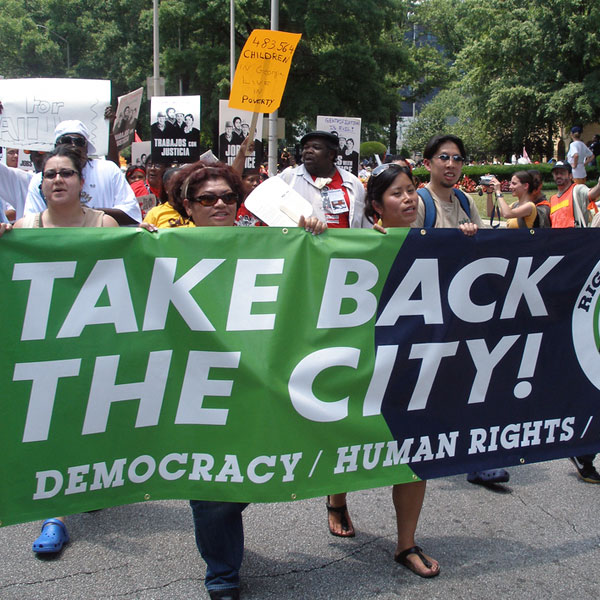
Principles of Unity / Right to the City Alliance
Right to the City (RTTC) is a newly formed alliance of base building organizations from cities across the country as well as researchers, academics, lawyers, and other allies. We came together in January of 2007 to build a united response to gentrification and the drastic changes imposed on our cities. We stand together under the notion of a Right to the City for all.
Right to the City offers a framework for resistance and a vision for a city that meets the needs of working class people. It connects our fights against gentrification and displacement to other local and international struggles for human rights, land, and democracy.
We are coming together under a common framework to increase the strength of our community organizations and our collective power. Our goal is to build a national urban movement for housing, education, health, racial justice and democracy.
We believe the right to the city is the right for all people to produce the living conditions that meet their needs. This includes: Land for People vs. Land for Speculation, Land Ownership, Economic Justice, Indigenous Justice, Environmental Justice, Freedom from Police & State Harassment, Immigrant Justice, Services and Community Institutions, Democracy and Participation, Reparations, Internationalism, and Rural Justice.
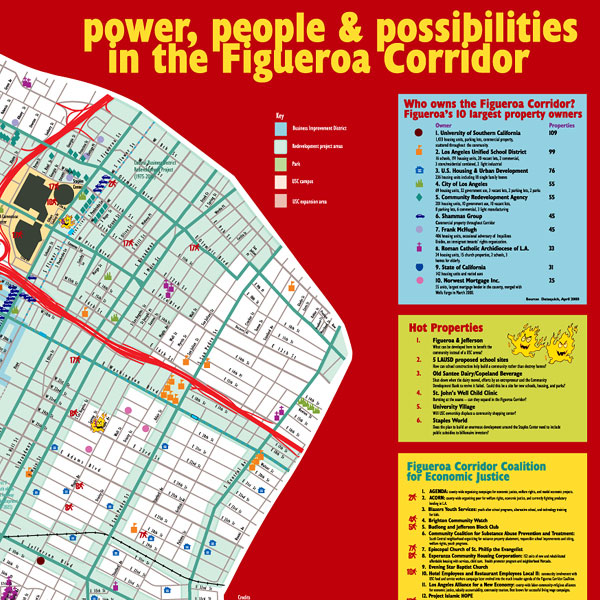
The Figueroa Corridor Coalition for Economic Justice / SAJE
The Figueroa Corridor Coalition for Economic Justice works to ensure that the billions of development dollars that are being spent on the 40-block strip between the University of Southern California (USC) and the Staples Center have tangible benefits for people who live in the surrounding neighborhoods.
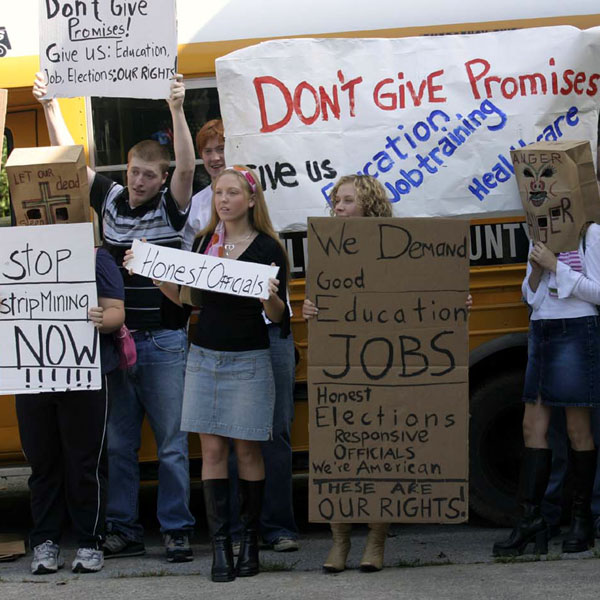
RFK in EKY / Appalshop and John Malpede
RFK in EKY, The Robert F. Kennedy Performance Project, is a series of public conversations and activities centered around the real-time, site-specific intermedia performance that recreated, on September 9th and 10th 2004, Robert Kennedy's two-day, 200 mile "poverty tour" of southeastern Kentucky in 1968.
The project provides an opportunity to revisit the essential and still pertinent questions raised in Kennedy's original visit (2004 being, like 1968, a pivotal election year): on the representation of marginalized populations in the national consciousness; the role of government in maintaining a quality-of-life safety net, and fostering sustainable economic development, educational and vocational advancement; ways to stem the out-migration of rural young people and the loss of natural resources; and the priorities of a government administration engaged in a protracted war. RFK in EKY, like Kennedy and those who created his tour, recognizes these questions are part of an important national dialogue for which Appalachia is only one of many possible settings.
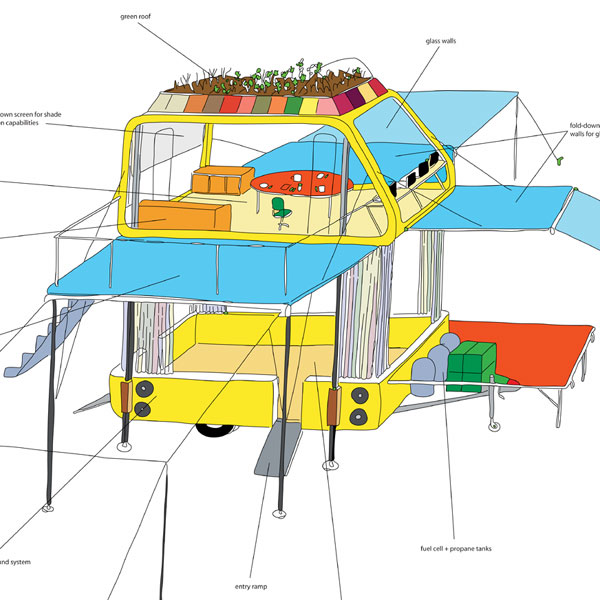
Mobile Planning Lab for South LA / Scott Berzofsky, Chris Gladora, Dane Nester, Nicholas Wisniewski, and SAJE
In an effort to make just space(s) outside this exhibition, the organizers have initated a collaboration between SAJE (Strategic Actions for a Just Economy) to develop a mobile community design resource for residents in South Los Angeles. This mobile lab will create opportunities for local community members, artists, architects, and planners, to initiate and engage with planning processes and decisions that affect their neighborhoods, and to have fun along the way. These initial drawings - meant to stimulate imaginings about how this resource could function - were produced by Scott Berzofsky, Chris Gladora, Dane Nester and Nicholas Wisniewski in consultation with SAJE. After funding is secured, the structure will be collaboratively designed and built through a much larger effort involving local residents.
DOWNLOAD >>> Listening, Collaboration, Solidarity (3.4MB PDF) by Scott Berzofsky, Christopher Gladora, David Sloan, and Nicholas Wisniewski. Critical Planning, Volume 14, Summer 2007.
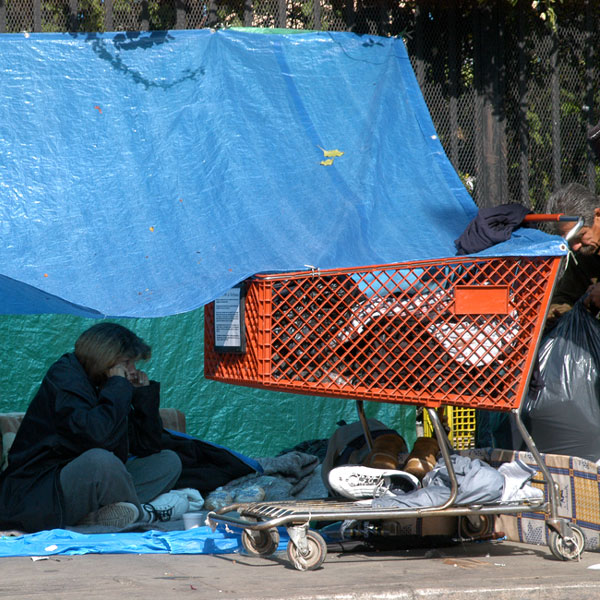
UTOPIA-dystopia / Los Angeles Poverty Department
One person's utopia is another's dystopia. In the past 40 years civic policy in Los Angeles has generated the twin towers of utopia and dystopia: Bunker Hill, the redeveloped high rise financial center, and below it Skid Row. The real estate boom has generated new social policy, including the desired displacement of the majority population of poor people living in the area. The other LAPD, in defiance of the 9th Circuit court of appeals ruling barring the criminalization of homelessness, has engaged in a policy of constant harrassment and daily arrests of people living on the streets. All to make the area safe for development.
What is the vision for downtown Los Angeles? A powerful urban core that will dominate the city in the future is taking shape. But, what shape? Will the "new urban lifestyle" be an upscale urban monoculture? Or is city life at it's core about embracing and celebrating an unpredictable, dynamic, socio-economic mescla. City or McCity, that is the question. "The Future" is being painstakingly crafted, created and promoted by a coalition of development and civic political interests: the City Fathers who know best. UTOPIA/dystopia, project activities will engage long standing and new area residents, (including homeless and formerly homeless residents of Skid Row, the working poor, immigrants and their families and the area’s burgeoning loft-living population) to inform and broaden the public discourse, through strategic public art actions, and convenings.
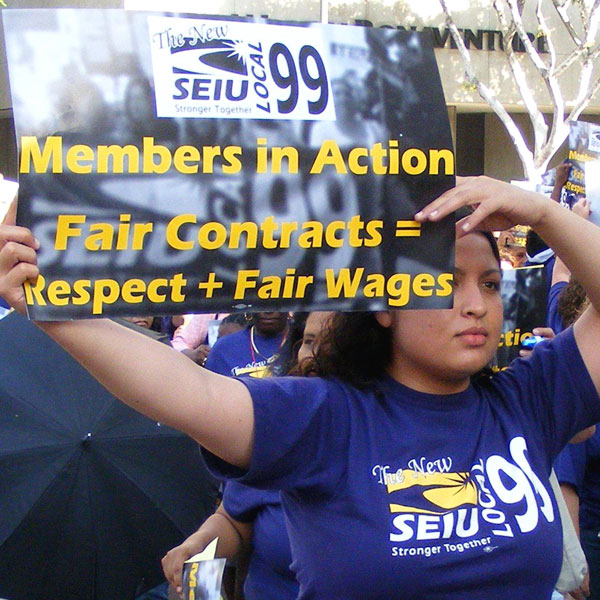
| THEME#3 >>> ECONOMIC JUSTICE / THE RIGHT TO THE CITY | Next Theme / Home |